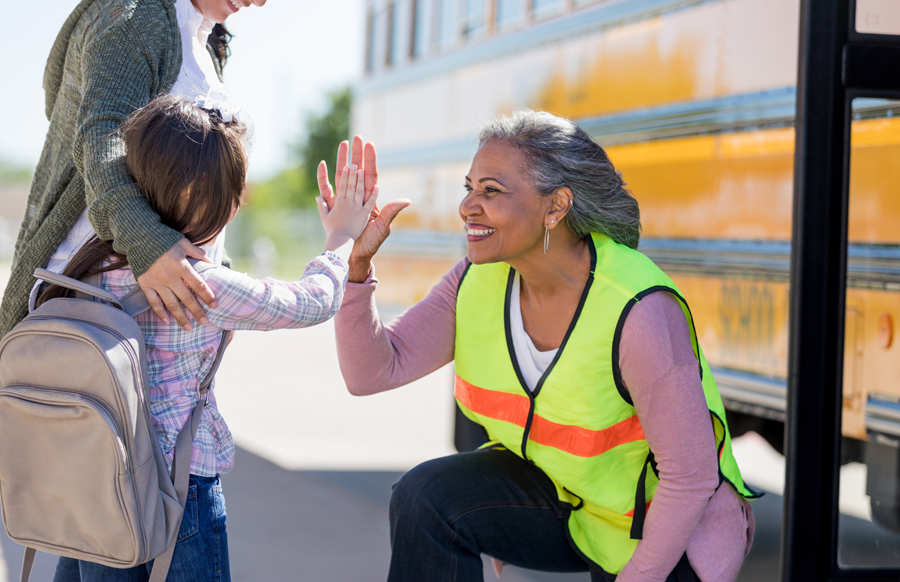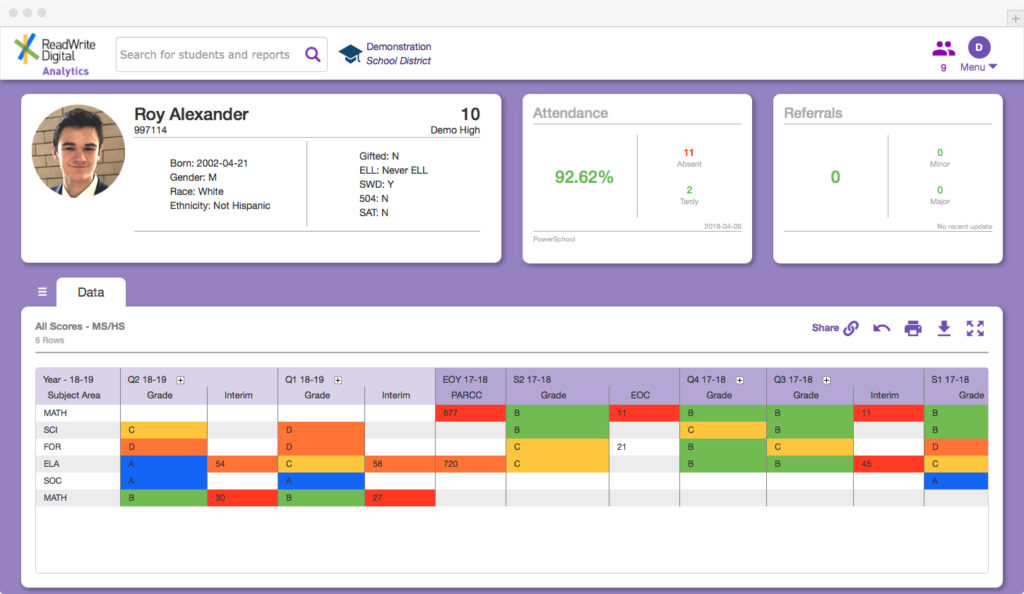The Call For Leadership: Public education will be key for America
In the face of uncertainty and change driven by the pandemic, K12 Leaders have the opportunity to improve student learning through data and shared leadership.
2X Collaboration: Taking Shared Leadership and Collaboration to New Levels
2X leadership starts with inculcating a coherent mindset – where, as everyone does their work, they are looking for what works and what needs work. It’s a model aimed at connecting policies, processes, and procedures with students, teachers, administrators, LEAs, and legislatures for achievement at the highest levels.

Shared Leadership and Conviction
Looking ahead to the fall and all of the challenges facing public education leaders, it has never been more important for educators to work together. Problem-solving, creating coherence, aligning resources, and building capacity require a systemic and cultural commitment for major collaboration.
Figuring out how to navigate new and fluctuating schedules while scaling up digital platforms and evolving instructional practices, requires foundational work to expand the leadership team. The bedrock that the team is built on is the shared vision for success: the “we’ve got this” approach to address change – in schedules, in methodologies, in roles and responsibilities.
So who should be part of the leadership team? Everyone! All employees should be encouraged and nurtured to help solve problems and to help everyone grow and learn together.
It is crucial to remember that 40 to 50 percent of school employees are not instructional staff, but are essential for success. When was the last time your non-instructional staff was included in a back-to-school convocation where the vision and goals for the school year are communicated? It is unlikely that large group gatherings will occur in the fall, but what better way to model the use of technology to solve problems than a virtual convocation for all? The same can be true for encouraging positive involvement from community leaders and members, parents, and business leaders to be part of the teamwork and communication.
Everyone…Everyone Plays an Important Role
We all marvel at how quickly school systems moved to online learning at the onset of COVID-19 and school closures. But, aside from instructional planning, what was the next biggest focus? Feeding children. And who did we turn to – our foodservice teams. How did we get meals to areas where transportation was limited? Our bus drivers. The role of the school maintenance worker takes on greater responsibility as we plan for student’s return to our buildings. Here’s where 2x collaboration is at its best. Transportation, food service, maintenance, and office staff and teams can provide crucial information for making sure all systems are go.
Each team member’s role in meeting a student’s basic needs as part of the team plays a pivotal role in student readiness for instruction. We can build on lessons learned about the talent and skill each team member has to contribute as we plan for the start of a new year. Resources exist to help school divisions unpack the process of building their plan for 2X collaboration (check out Digital Promise and Harvard Business Review), but each division must define its unique processes and stakeholder groups to develop a system that works for their local culture.
Problem Solving – Define Your Goal
To affect systemic change we have to begin with a statement of the problem being addressed by change. It must be clearly identified and based on facts and shared understanding underpinned by data. Then we must define our end goal to determine what success will look like. How will we know we’ve solved the problem if we don’t know what or where the target is?
Creating Coherence – Form an Outcome
This is where educational technology can quickly help your team hone in on the problem to be solved. Now, as educators we have all at some point in our careers fallen victim to the practice of “admiring the problem,” revisiting it, adding nuance to it, reframing it over and over. Don’t get stuck here – define your goal. What is the outcome you are working towards for the betterment of your students and staff? A few short, concise, targeted, achievable, measurable goals provide coherence. Set benchmarks and analyze the data to determine that goals are on track or off track, adjust and advance.
Aligning Resources – Engage Your Whole Team
One strategy for aligning resources is to determine and agree upon a major goal from the above exercises – best if it’s a “stretch, but attainable” goal. The second step is to determine where each school is relative to achieving that goal. With the team, review the metrics and data available to establish where each school is today and how you will reflect your progress towards achieving the goal. Leaders then need to review their available resources and work backwards in steps considering what team members need to do in order to support the organization in achieving the goal. The leader needs to provide a clear understanding of what is desired and then agree with staff members on the milestones that they will manage to align in support of the major goal. Clear benchmarks with regular review by all of the stakeholders allows the organization to adjust their actions ensuring continuity and coherence of results. Alignment comes when the right team is energized and engaged by a major goal. If they aren’t then you either need to change the goal or change the team.
Building Capacity – Prepare to Reach Out
There are some who will immediately see dollar signs when they read “building capacity”, but I would challenge you to take the time to examine your current policies, practices, and procedures to identify inefficiencies and redundancies. Talk with your personnel. You may have an introverted teacher just dying to be asked to take a leadership role in this initiative. Notice your talent.
By embracing and modeling an environment of mutual respect and teamwork, along with focused determination and can-do dispositions, schools will create synergy and momentum. A systemic, shared vision that is visible in daily communication for the team to reference, that is constantly inculcated in every aspect of the instructional day is the engine that drives this type of change.
Instructional Transformation is Essential for Success
In past reference, collaboration was considered a good and useful practice, but as educators evolve using digital resources, it becomes an essential and powerful component for success. We can agree that the student is the center of all our efforts as we focus on increasing the rate of student success. But how can we expect student outcomes to improve if a) they are not included in the planning as part of the conversation and b) we as adults keep doing the same thing in the same way yet expect a different outcome?
Examples of Instructional Practices That Are Transformational
Grade-level teams analyzing their efforts through a shared lens enhances productivity and mutual trust. Organization and consistency are key factors. Imagine that instead of working separately to compile data from multiple, disparate learning systems and tools into individual spreadsheets (the common practice) grade-level teams had access to all the data for every student in one place – organized and consistent. Imagine, as an administrator, the ability to look at this data from a peer comparison lens to locate problems and solutions that are producing results for students. That’s what transformation looks like when we use the common language of data to highlight exceptional results and develop systems to replicate good practices – collaboration to the max!
Departments reviewing digital content and using a shared approach to self-analysis of student learning develop a broad review scope of instructional endeavors by class or course. Building a school culture where data is accessible and refreshed – daily; where there is data consumption and response – daily; where students, parents, leaders are informed – daily; and of the progress being made, programs that work and the opportunities for improvement – daily.
Developing student capacity to collaborate, along with utilizing this approach as teachers and professionals every day, builds a sense of ‘we are all in this together.‘ Let’s look at reframing our educational focus from teaching to learning. In this subtle but seismic shift, we are able to engage with students in the planning process of what we’re learning, how we’re learning, and how we will know we’ve learned. As we (the adults) see students as collaborators in the learning process and pull in resources needed to support learning, we are able to maximize the potential of each of our students.
This type of ubiquitous collaboration requires cultural and instructional transformation, where the practice of inquiry-based learning is part of everyone’s work – including teachers and students. Learning to work collaboratively also lines up the educational experience to be relevant for the students’ futures. A few years ago a group of visitors were talking to a class of third-grade students in Mooresville Graded School District (MGSD) in North Carolina. One student told a guest he would be reading well above fourth-grade level at the end of the year. When the guest asked, “How do you know?” The student replied, “because I am in charge of my learning.”
Public education leaders will need to elevate collaborative work with every aspect of daily endeavor. This is a time of great challenge, but a team of leaders can translate this into significant growth and opportunity creating a sense of team that can solve problems and grow together – lifting everyone. Preschool and kindergarten teachers have always understood the importance of 2X collaboration; every time they instruct students to ‘hold hands and stick together!’
Coming Next: Turbocharging Accountability and Achievement

